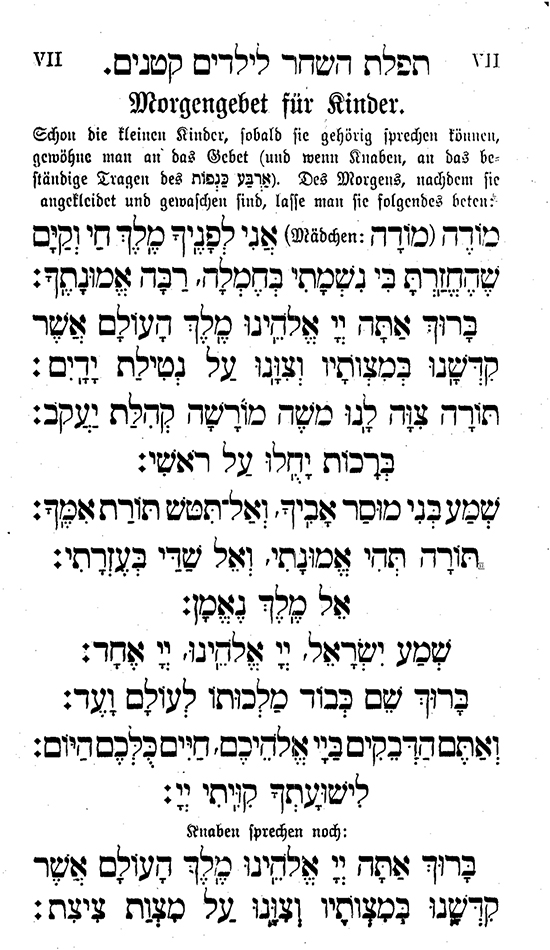נוסחי ברכות ותפילות שאינם בלשון נקבה
2 views
Skip to first unread message
אוריאל פרנק
Nov 18, 2018, 9:55:41 AM11/18/18
to
הערה לשונית אחרונה מתוך דברי ר' פרופ' מלך (מארק) שפירא (דלקמן, כאן) על הדיוק במין הדקדוקי בתפילות נשים, ועל מחלוקת מעניינת בין הגרח"ק שליט"א לרבנית בת שבע ע"ה...
כמה הערות אפ"ר:
א. השאלה היותר חשובה היא הניקוד של "מודה אני" בתוך ברכת "המחזיר נשמות" שתיקנו חז"ל, לעומת התפלה המאוחרת שבתחילת הסידור.
ב. כיו"ב, יל"ע מהו המענה לברכת הגומל ("מי שגמלךָ"...).
ג. לא הוזכרה כאן דעת האשל אברהם (בוצ'ץ') בסימן מ"ו.
[ותודה לידידי, "רב צעיר", שהפנה את תשומת לבי לפרסום בבלוג הנ"ל].
Let me close with one final mistake in ArtScroll, or perhaps it is not a mistake; readers can decide on their own. The ArtScroll Ohel Sarah Women’s Siddur is a special siddur designed for women. On the very first page of the prayers, this siddur has מודה אני with a segol under the ד. In a women’s siddur doesn’t there need to be a kamatz under the ד so that it reads modah?
This might reflect a broader issue. My experience is that in co-ed kindergartens the girls are also taught to say modeh. This might not be surprising, but I was also told by a number of people that even in girls-only kindergartens, both Ashkenazic and even some Sephardic ones, the girls are taught to say modeh. No doubt recognizing this problem, R. Yitzhak Yosef makes a point of placing a kamatz under the ד so that people will know how women are to pronounce the word.[11] R. Shlomo Zalman Auerbach likewise told the women in his family to say modah.[12]
It is noteworthy that in one of the editions of Wolf Heidenheim's Siddur Sefat Emet, found on Otzar ha-Hokhmah, girls are instructed to say modah.
However, this edition appeared after Heidenheim's death, and unfortunately there is no way to determine exactly when. (The Basel 1956 date on the title page is just the date of the photo-offset edition, not the original.) As far as I can tell, none of the siddurim that appeared in Heidenheim's lifetime distinguish between men and women with regard to modeh-modah.
In response to questioners, R. Hayyim Kanievsky also stated that women are to pronounce the word as modah.[13] Despite this, when R. Meir Arbah asked Rebbetzin Batsheva Kanievsky, R. Hayyim’s wife, what she did, she replied that she pronounced it modeh![14]
The ArtScroll Women’s siddur also has שלא עשני גוי and not גויה and שלא עשני עבד instead of שפחה. This too would seem to be incorrect in a women’s siddur, but the standard version is defended by R. Shmuel Wosner, as he claims that the words גוי and עבד include both men and women.[15] More about this in the next post.
[11] Otzar Dinim la-Ishah ve-la-Bat, ch. 1, no. 2 (p. 22), Yalkut Yosef, Dinei Hashkamat ha-Boker, 1:9. It is noteworthy that R. Yom Tov Lippman Heller was also interested in ensuring proper pronunciation. Mishnah, Toharot 8:5 reads: שוטה אחת בעיר. Tosafot Yom Tov comments:
בקמץ הטי"ת כמו כי רועה היא (בראשית כט)
[12] Halikhot Shlomo, Tefilah, ch. 2 n. 17.
[13] Halikhot Hayyim, ch. 1 no. 1, Da’at Notah, vol. 1, p. 16. The very title of the last book mentioned is an example of what we are talking about, as it is more common for people to write “da’at noteh”, but this is not grammatical.
[14] Meir Oz, vol. 1, p. 27.
[15] Shevet ha-Levi, vol. 10, no. 8.
Reply all
Reply to author
Forward
0 new messages

